Take it to Trial
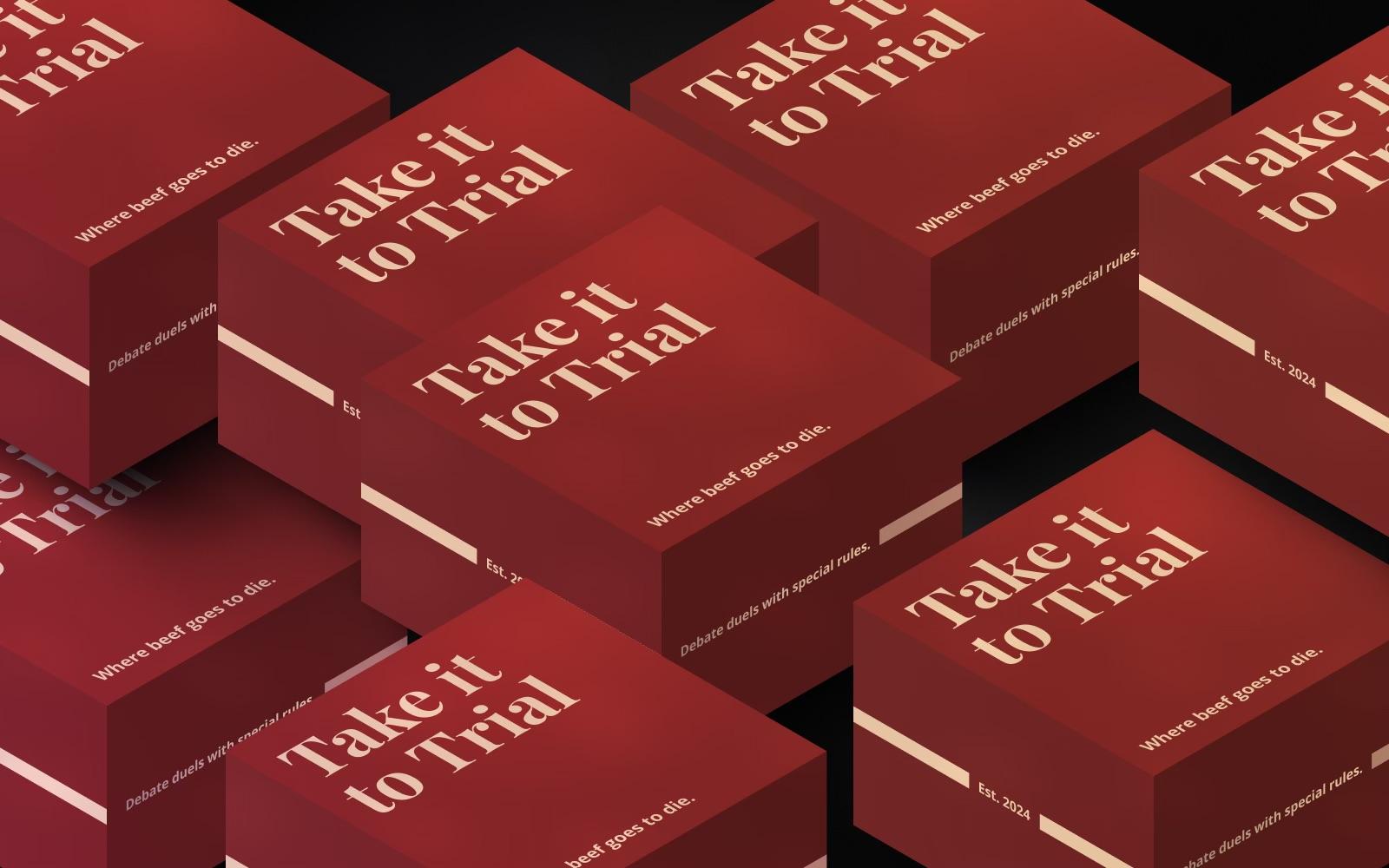
Link to printable: https://docs.google.com/document/d/1FB84VN2wLkgbvqualT8PygtK-TJxpBXPOzmHq-6nLJg/edit?usp=sharing
Artist Statement
Take It to Trial is a debate-themed party game where two players are challenged to debate a spicy topic and the remaining players are tasked with playing cards to get rewarded for the debaters’ mistakes and deciding the winner of the debate. The game works as follows: the two debaters pick a topic card (ex. “Water is wet.”). Everyone plays one of their seven word cards that they started with. The non-debating players try to play words that the debaters will almost certainly need to say during the debate. If a debater says your word card, you get to draw a new card (it’ll be either a new word or a power-up). Your hand of cards is the currency of the game. Topic cards (won by winning debates) are worth 5 points, word cards (won by debaters accidentally saying the word you played) are worth 1 point, and power-ups are worth 0 points but can give you a leg up in the game. The first to reach 25 points wins!
Our goal with Take It to Trial was to create a spicy friendship-building environment in which players summon their creativity and mix it with friendly aggression over silly, eternally debated topics. As passionate quarrels gain steam, the debaters are trip-lined by the jury when they accidentally say the forbidden words that they laid before the debate. If the right combination of words is played by the jury, the tongue-tied debaters feel like they’re walking on a metaphorical tightrope. The contrast between thoughtful caution and the exchange of rambunctious argumentative blows creates a dynamic bursting with fun, creativity, and spicy situations. We hope that intra-friend group beef is settled, not created 😉
We wish you the best of luck and skill (you’ll need it),
Team Take It to Trial
Concept Map
We initially wanted to make a presidential candidacy race game with similar mechanics to the Game of Life. We first brainstormed mechanics for this, which is how we came up with the idea for debates between players. After ideating on this idea and talking to a few people about the idea, we thought that it would be better to simplify the game and focus on the mechanic that we were most excited about, which was the debate mechanic. This is how we came to the concept of the game that we iterated upon, which was an Apples to Apples judgment style game where a judge picks the winner of a debate between players. Below is our concept doc and mechanics brainstorm for both the original presidential race concept as well as the new debate focused game:
Initial decisions and values:
As stated previously, our initial idea for the game was to make a Game of Life type game that was a race for the Oval Office. This included a debate mechanic between players, but we wanted to make sure that the debate topics were more fun and goofy rather than actual political debates. After coming up with a few debate topics and getting feedback about our concept, we decided that it would be best to focus on the silliness and uniqueness of the debate topics and make that our whole game. This changed the value of the game from a linear board game to a judgment game that could be played as long as the players want. We also shifted from a competitive race game to a more social game that is still competitive, but aims to facilitate fun debates and discussions, and could be played in many different contexts. We wanted to keep the same types of fun (Fellowship, Fantasy, and Expression) as the main types, but we shifted the context of the game, and by focusing on the debates we wanted to create more verbal situations that could lead to heated debates and fun discussions.
Iterations and playtests:
Iteration 0: Initial Concept
As stated, our initial concept was the presidential candidacy game, where players would race through different stages of the election process. This included a linear path that players move through and get to different checkpoints. Although we didn’t flesh out this idea a lot before we shifted our game concept, this is the idea that led us to the game that we iterated upon: the debate game.
Iteration 1: Paper prototype
Our first paper prototype was a quick paper prototype that we scribbled onto scraps of paper in class. It started with a pile of topic cards, and a pile of character cards. The idea was that two people would debate, and each player would draw a character card before they debated. They would have to debate as that character, and try to throw in some phrases that that character might say. We playtested this iteration with our group in class, and although we didn’t play much, we were able to learn a lot:
Playtest: with our group in class
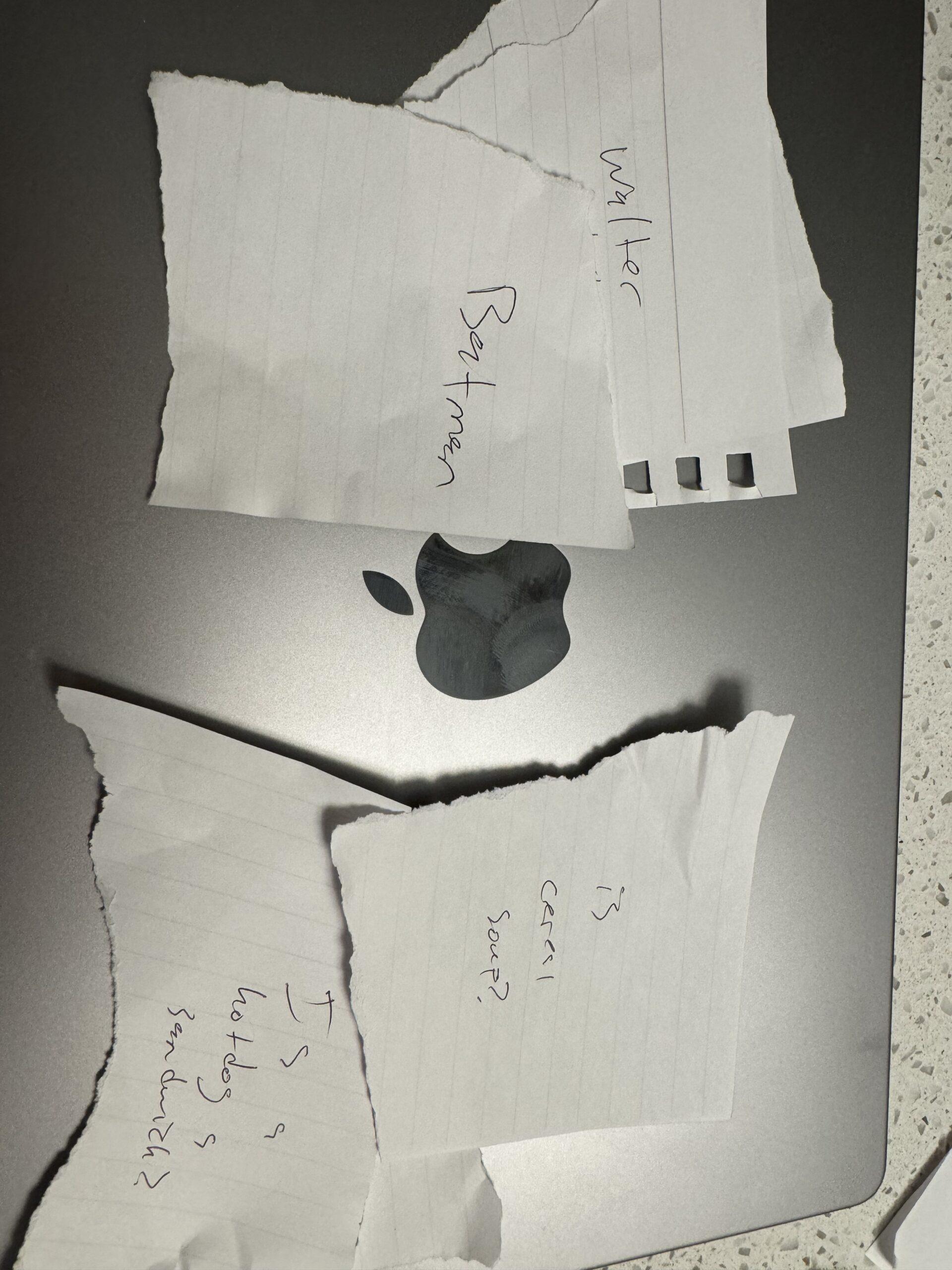
Takeaways for the next iteration:
- Needed to figure out how we wanted to rotate who debates during a round
- Needed to figure out how the point system would work, and what the win conditions were
Iteration 2: First playtest outside our group
Our next prototype was another paper prototype with our cards just being index cards that we had written debate topics and character cards. It was very similar to the initial iteration that we had, but was more fleshed out and had more specific rules. We had different phases, which were the character selection phase, the preparation phase, the debate phase, and the voting phase. The two debaters would be determined by having the two youngest players debate first, with the judge being the oldest person. After that, of the people that hadn’t debated that round, the winner of the last round would choose who was to debate next. We had some success testing this iteration, as players seemed to get into their characters and have fun, but we did have some feedback and observations that we wanted to improve on for the next iteration:
Playtest: In class: 5 college students
**forgot to take picture, took a picture of the materials used instead**
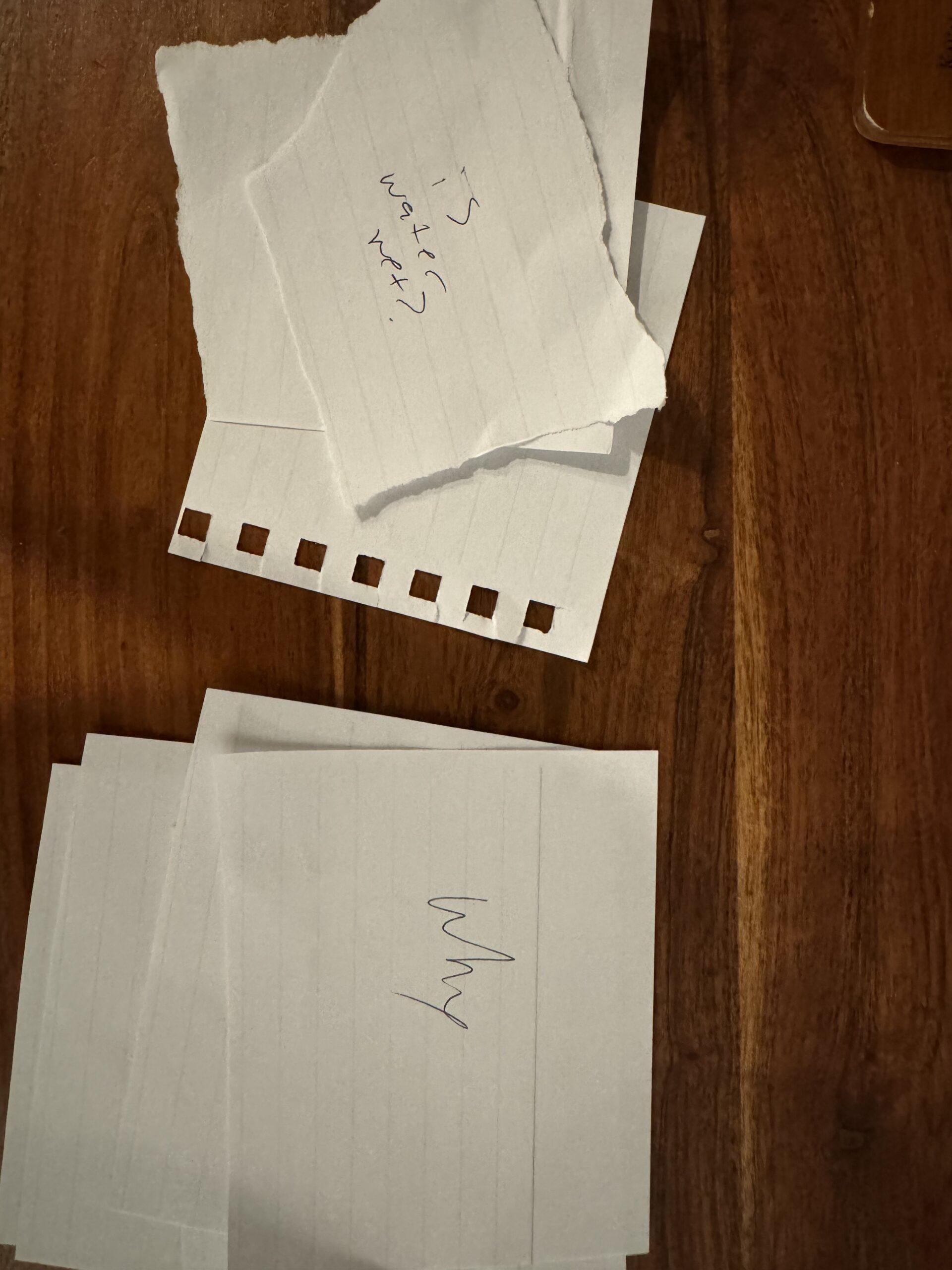
Playtest: outside class: 2 adults and 3 college students
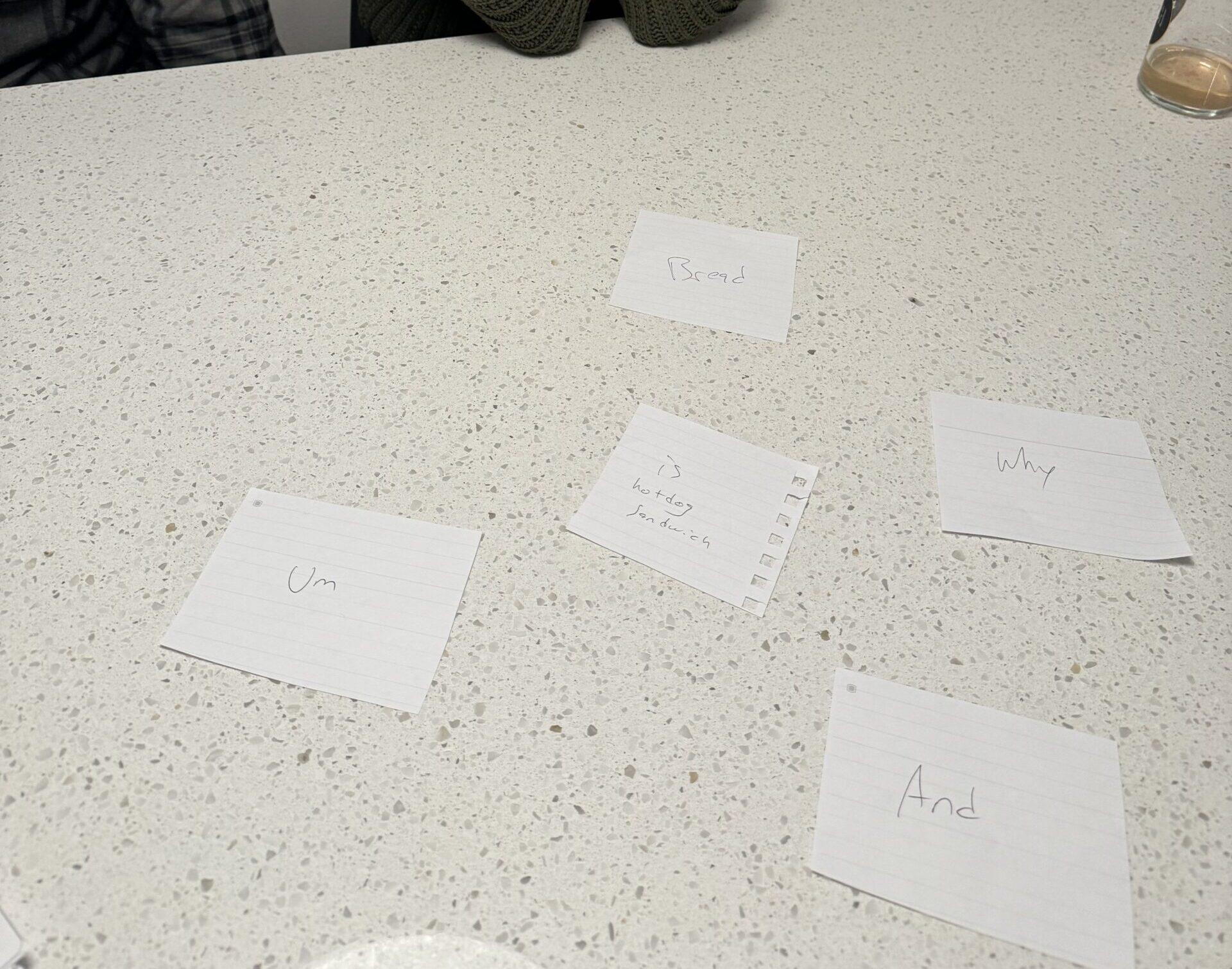
Takeaways for next iteration:
- Having to debate as specific characters seemed to limit the player’s debates more than facilitating creativity, which was the intention
- Should consider finding an alternative to the characters to make the game fun and unique, without reducing creativity
- Point system is still unclear, need to make a defined point system and win conditions
- Those who weren’t debating or judging didn’t feel engaged in the game
- Rounds felt long
- Play around with tweaking the time allocations for the different phases
Iteration 3: Introduction to forbidden words
This iteration we decided to get rid of the character mechanic, and replace it with “forbidden word” cards. These aim to solve the problems that we had with character cards by allowing players to be unrestricted in their creativity while also maintaining a unique mechanic, and engaging those that aren’t debating. The basic concept is that each player gets a certain amount of word cards, and each round everyone, including those who aren’t debating, can play one word card. Whatever words have been played for that round cannot be said by the debaters, so they have to be creative about their phrasing, but aren’t constrained by their character about how they can argue. This also keeps the audience engaged, because we created the rule that they can swap out any of the word cards that they played for another one in their hand at any time, so they can have fun messing with the players that are debating. There was also an introduction to powerup cards, which were mixed in with the word cards, and when played would give players different abilities and advantages. We also defined a point system, in which word cards in a player’s hand are worth 1 point, and question cards are worth 5. A player starts out with 5 word cards initially, and earns more by calling out a debater who says one of the forbidden words, which allows the player who called them out to steal one of their word cards. A player wins a question card by winning a debate.
Playtest: Outside class – 4 college students
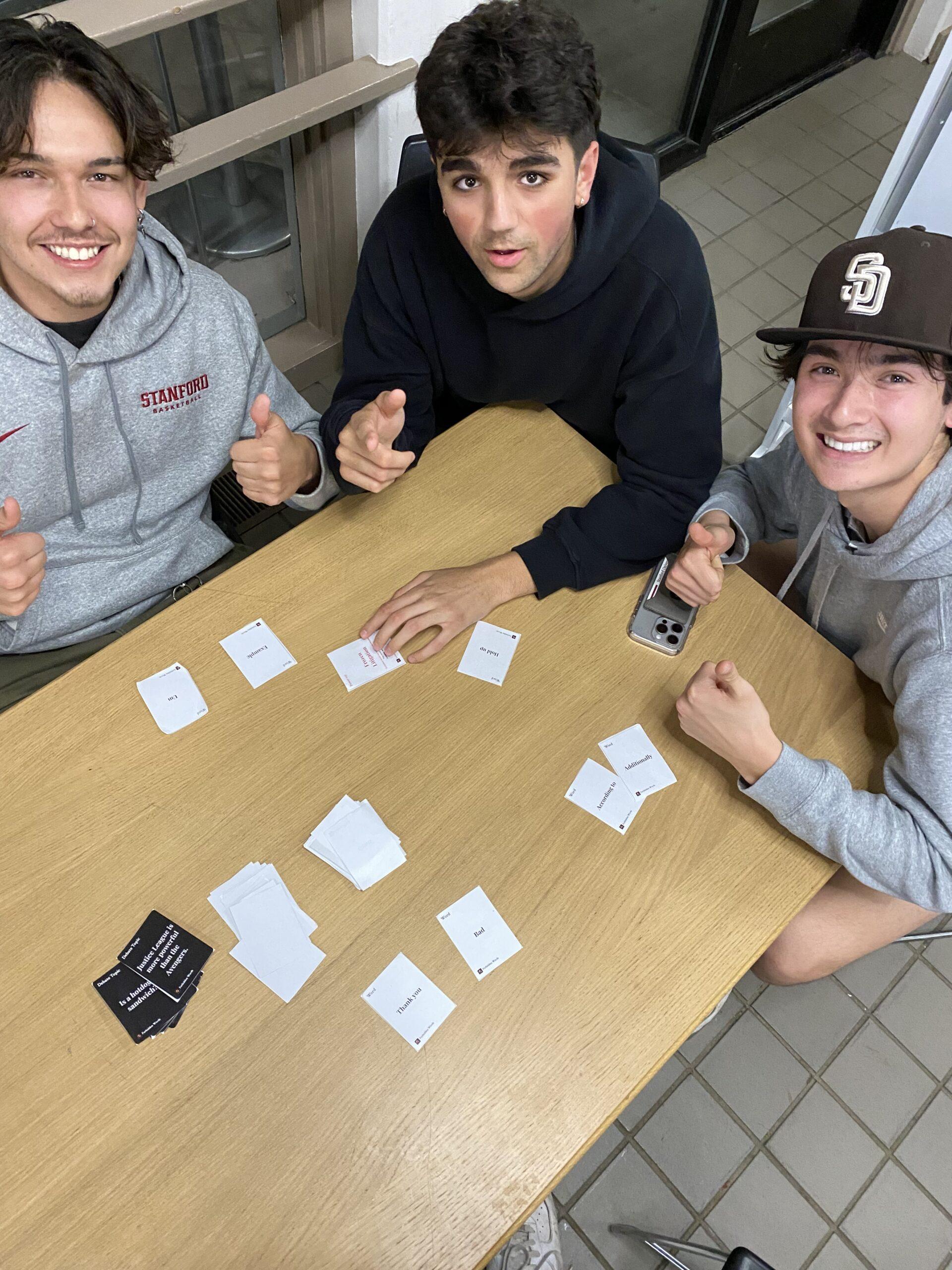
Playtest: In class: 5 college students
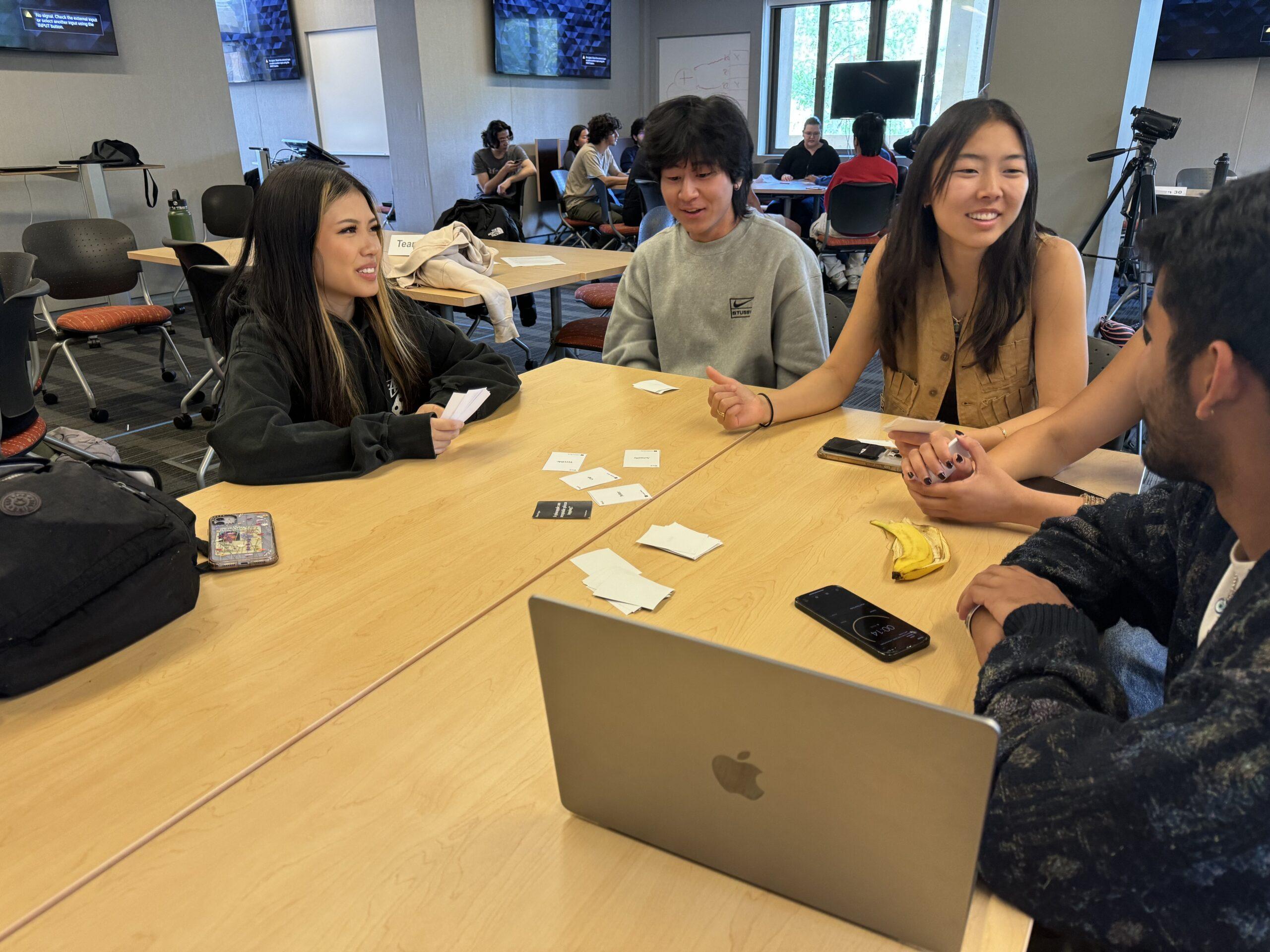
Takeaways for the next iteration:
- Word cards worked well, but the point system confused the players, either because it was confusing or because the rules were unclear
- Simplify rules and the point system
- Players were confused about when to play powerups, even though we tried to specify on the card when they could play them
- Make rules about the powerup cards and make them all consistent so that players know when to play them
Iteration 4: Final Iteration
Our final iteration didn’t make any major changes to the mechanics, we just had to clean up some of the rules to make things more clear for the players. First, we simplified our rulebook to make it more clear for the players, and simplified the point system. Instead of including the word cards as points, we made it similar to Apples to Apples with the scoring, where you win the question card for the debate that you win, and you play until a player gets to a certain number of question cards. We also made it so that players would always play power up cards before the actual debate started, so that there was no confusion about when to play those.
Final Playtest: 2 adults and 2 college students
** one of our group members played in the playtest to fill in numbers, but did not explain any of the rules
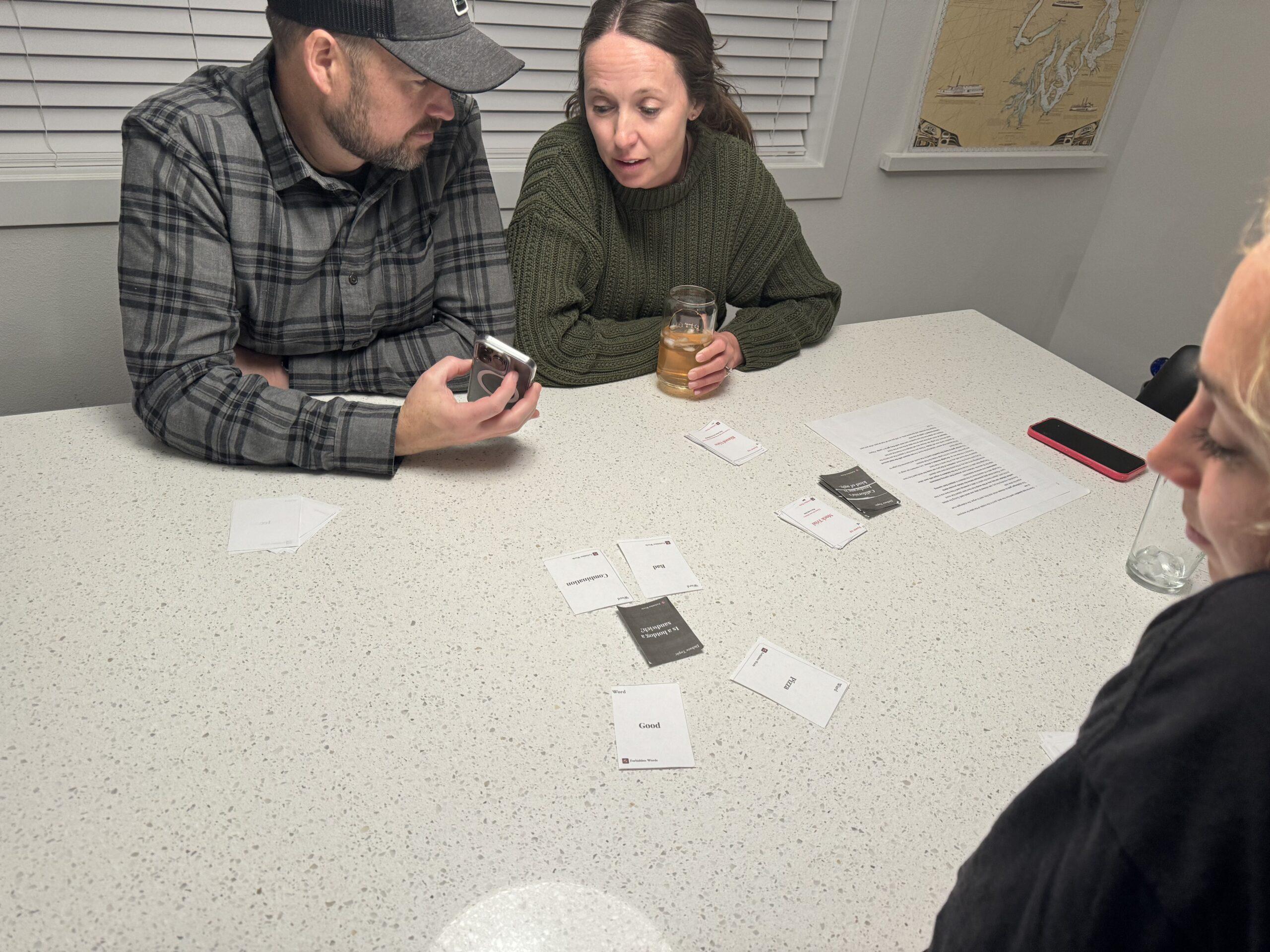
Link to final playtest recording: https://www.youtube.com/watch?v=CJc2cse8ZVg



